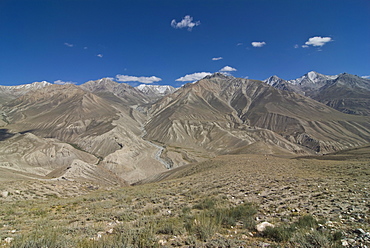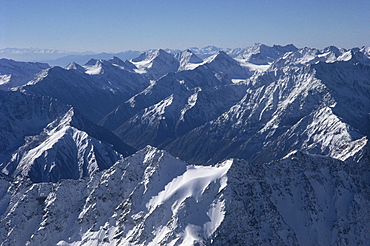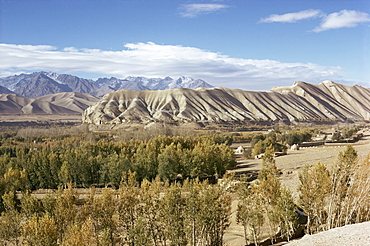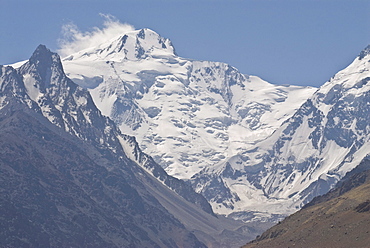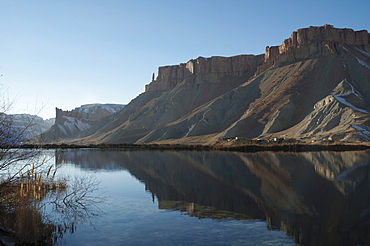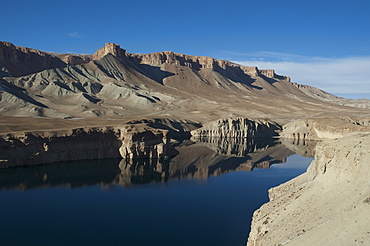Results
5 results found

A truck drives over a makeshift bridge supported by ruined tanks on the road north of the Salang Tunnel in Baghlan province, August 31, 2002. High in the mountains of the Hindu Kush, the road was destroyed several years ago by a flood from raging mountain rivers. The road was improved by the Soviets after their 1979 invasion of Afghanistan, and was a crucial link for troops and supplies coming from the Soviet Union. The mountain road is in terrible condition, and its repair is crucially important for the reconstruction of the country
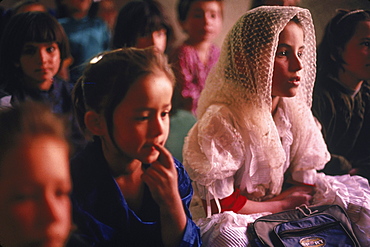
Tajik girls study in a rural school, without windows, desks or chairs, in the Panjshir Valley, Afghanistan. The Panjshir Valley, which was a stronghold for Tajik commander Achmed Shah Masood, was heavily bombed during the Soviet occupation of Afghanistan, but much has now been rebuilt.
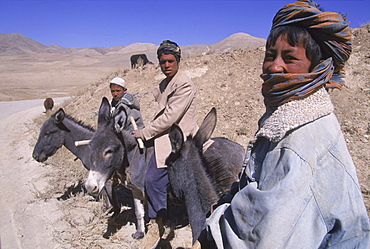
Young boys on donkeys watch over flocks of goats, sheep and donkeys near the top of the Shebar Pass, which crosses into the Province of Bamiyan. Due to a devastating drought in the region, dry wheat farming has failed for three years from 1998-2002 and the forage is extremely sparse, The pass is a strategic point leading into the Central Highlands, the Koh-i-Baba range and the Hazarajat, at the end of the Hindu Kush. Most of the people of this region are of the Hazara tribe, and are Shi'a Moslems who have been persecuted for centuries by many of the Pashtun rulers of Afghanistan, who are from the Sunni sect.
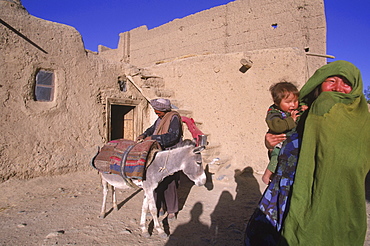
Striking Mongol features distinguish the face of a woman and her child (who is blind) living in the ruins of the Qala-i-Dokthar (Daughter's Castle), outside of the town of Bamiyan, August 30, 2002. Most of the old town was destroyed and up to 20,000 people of the region might have perished when Bamiyan fell to the Taliban in 2001. Bamiyan Valley is located in the Hazarajat at the edge of the Koh-i-Baba range , the end of the Hindu Kush. Bamiyan was a prosperous Buddhist kingdom on the ancient Silk Road until the 10th century, when the region was converted to Islam; in the 12th century, it was destroyed by Ghengis Khan. Most of the people of this region are of the Hazara tribe, and are Shi'a Moslems who have been persecuted for centuries by many of the Pashtun rulers of Afghanistan, who are from the Sunni sect. They most recently suffered at the hand of the Taliban, who tried for years to ethnically cleanse the region of its Shi'a people.
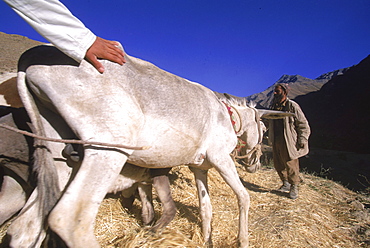
Tajik farmers and their families thresh wheat with oxen and donkeys, in a side valley to the Panjshir Valley, in the Hindu Kush mountains, September 10, 2002. Agriculture is primitive and labor intensive in this remote valley. The Panjshir Valley and its side valleys have long been a stronghold for the Tajik people, and the famous commander Ahmed Shah Masood, in their struggle first against the Soviets and then against the Taliban. The Tajik are one of the larger ethnic groups in Afghanistan, second only to the Pashtun people.

Striking Mongol features distinguish the face of Hamir Mohammed, his daughter and grandson (who is blind), all living in the ruins of the Qala-i-Dokthar (Daughter's Castle), outside of the town of Bamiyan, August 30, 2002. Most of the old town was destroyed and up to 20,000 people of the region might have perished when Bamiyan fell to the Taliban in 2001. Bamiyan Valley is located in the Hazarajat at the edge of the Koh-i-Baba range , the end of the Hindu Kush. Bamiyan was a prosperous Buddhist kingdom on the ancient Silk Road until the 10th century, when the region was converted to Islam; in the 12th century, it was destroyed by Ghengis Khan. Most of the people of this region are of the Hazara tribe, and are Shi'a Moslems who have been persecuted for centuries by many of the Pashtun rulers of Afghanistan, who are from the Sunni sect. They most recently suffered at the hand of the Taliban, who tried for years to ethnically cleanse the region of its Shi'a people
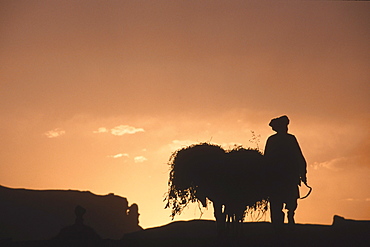
A farmer with his donkey loaded with forage walks toward the setting sun above the town of Bamiyan, August 30, 2002. Most of the old town was destroyed and up to 20,000 people of the region might have perished when Bamiyan fell to the Taliban in 2001. Bamiyan Valley is located in the Hazarajat at the edge of the Koh-i-Baba range , the end of the Hindu Kush. Bamiyan was a prosperous Buddhist kingdom on the ancient Silk Road until the 10th century, when the region was converted to Islam; in the 12th century, it was destroyed by Ghengis Khan. Most of the people of this region are of the Hazara tribe, and are Shi'a Moslems who have been persecuted for centuries by many of the Pashtun rulers of Afghanistan, who are from the Sunni sect. They most recently suffered at the hand of the Taliban, who tried for years to ethnically cleanse the region of its Shi'a people
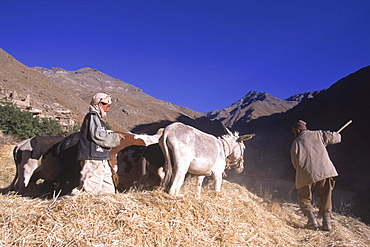
Tajik farmers and their families thresh wheat with oxen and donkeys, in a side valley to the Panjshir Valley, in the Hindu Kush mountains.

Hindu Kush mountains reflections in Band-i-Haibat (Dam of Awe), Band-i-Amir, Bamian Province, Afghanistan
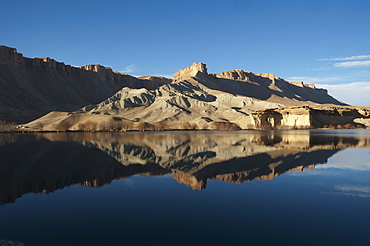
Hindu Kush mountains reflections in Band-i-Haibat (Dam of Awe), Band-i-Amir, Bamian Province, Afghanistan
